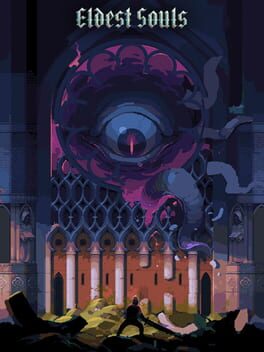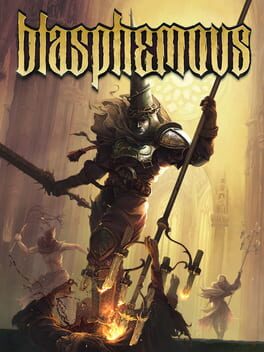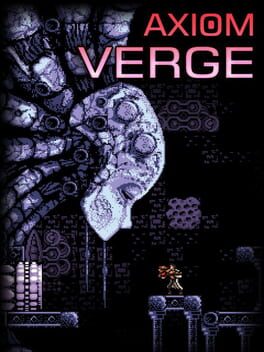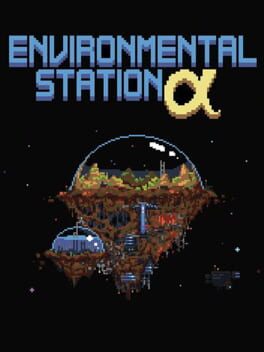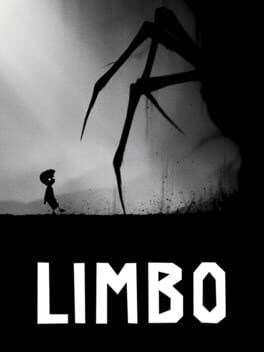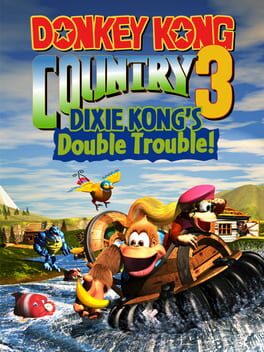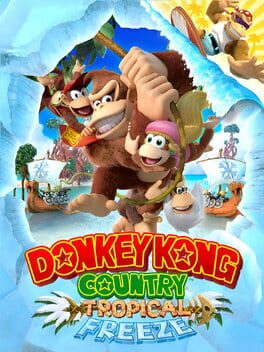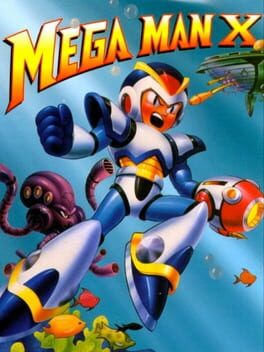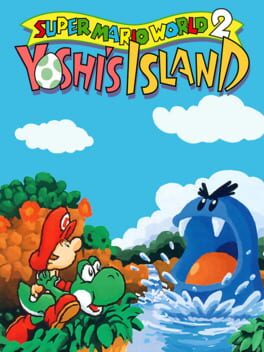EldestBrisingr
2021
Souls-likes are hard to get right. The reason games like Dark Souls and Hollow Knight are so beloved is because they are greater than the sum of their parts. Eldest Souls lacks quite a few of these parts, such as a bloodstained mechanic, interesting lore, and a varied roster of normal enemies. As such, it’s fair to say it doesn’t reach the heights of its inspiration. However, by focusing on its strengths, those being the combat and bosses, Fallen Flag Studio has managed to create a title that stands out in an overcrowded genre.
Boss rushes are nothing new, but I haven’t played one that was so consistently satisfying. Every single boss after the tutorial has unique mechanics that create beautiful, deadly dances between them and the player. I died over 300 times before reaching the credits, but I was never frustrated because my deaths were fair and I was allowed to immediately retry the fight. I cannot stress enough how much I love the immediate retries, along with being able to return to the last save point if you need a break or want to switch your loadout. These are things every video game with boss fights should include going forward.
As for the combat, it puts a few twists on traditional Souls-like combat. Attacks feel heavy like in Dark Souls, but you have a charge attack that allows you a fill a meter. When it’s full, your attacks are faster, stronger, and heal you. This only lasts for a short time, so being aggressive is important. That’s just the tip of the iceberg though. There are also runes you can equip that enhance your moveset, a slam attack that deals heavy damage at the cost of depleting the charge meter, and a stamina system that depletes only when you dodge instead of every action you take (successful dodges even refund stamina). There’s a good amount of depth to the combat once you adapt to it.
Streamlined really sums up Eldest Souls. It knows exactly what it wants to be and commits to it. One could argue that the game is too barebones as a result, but with so many Souls-likes adopting similar structures and gameplay loops, I welcome the change of pace. Bosses are often the highlight of these games, so if you’re like me and want that classic challenge of overcoming larger-than-life foes using the satisfying, weighty combat the genre is known for, Eldest Souls will deliver.
Boss rushes are nothing new, but I haven’t played one that was so consistently satisfying. Every single boss after the tutorial has unique mechanics that create beautiful, deadly dances between them and the player. I died over 300 times before reaching the credits, but I was never frustrated because my deaths were fair and I was allowed to immediately retry the fight. I cannot stress enough how much I love the immediate retries, along with being able to return to the last save point if you need a break or want to switch your loadout. These are things every video game with boss fights should include going forward.
As for the combat, it puts a few twists on traditional Souls-like combat. Attacks feel heavy like in Dark Souls, but you have a charge attack that allows you a fill a meter. When it’s full, your attacks are faster, stronger, and heal you. This only lasts for a short time, so being aggressive is important. That’s just the tip of the iceberg though. There are also runes you can equip that enhance your moveset, a slam attack that deals heavy damage at the cost of depleting the charge meter, and a stamina system that depletes only when you dodge instead of every action you take (successful dodges even refund stamina). There’s a good amount of depth to the combat once you adapt to it.
Streamlined really sums up Eldest Souls. It knows exactly what it wants to be and commits to it. One could argue that the game is too barebones as a result, but with so many Souls-likes adopting similar structures and gameplay loops, I welcome the change of pace. Bosses are often the highlight of these games, so if you’re like me and want that classic challenge of overcoming larger-than-life foes using the satisfying, weighty combat the genre is known for, Eldest Souls will deliver.
2018
Hades wants to be two games at once. It wants to be a fun roguelite and it wants to tell a narrative over the course of multiple runs. I'm actually a fan of this idea. Prior to this game, I only had Dead Cells as a reference for what roguelites entail and that game, as fun as it was, certainly lacked a captivating story. Hades definitely commits to its goal, but it falls short of its potential for me to consider it a masterpiece.
Even though I love Greek mythology (the game's voice acting and portraits of the gods are amazing), I thought the story didn't have enough forward momentum. There were many runs where I was eager to see what characters like Achilles, Orpheus, and Nyx had to say upon my return to Hades' domain, only to find them absent or having nothing interesting to say. This was disappointing, as I didn't feel the story progressed much. There are about two or three story revelations regarding Zagreus and Hades prior to the completion of your first run, and you will likely see them all before your 20th run. However, it took me about 40 attempts to finish my first run. Why? Because the last two bosses are poorly balanced. They each have an excessive amount of health and don't change up their attacks enough to warrant that much health. I could not beat them without investing in Death Defiance, which essentially gives you extra lives. This is particularly frustrating because you have to beat these bosses every time you want to complete a run. It certainly doesn't help that these fights often get too visually busy with so many colorful splashes and particle effects. This is also a problem in every zone of the game from Asphodel onwards (that's 3 out of 4 areas!) and it seems to get worse the further you get into a run.
I don't understand how other people didn't encounter these issues when I managed to complete my first run of Dead Cells, a much harder game, only three days after starting it. Hades is said to be a roguelite for people who hate roguelites, which implies the game is more accessible. Indeed, there is a god mode that increases Zagreus's defenses with each failed run for those that don't care much for the gameplay. I didn't play on god mode and yet it feels like the game was designed with it in mind. If that was the case, they should have made it more clear.
How about the game's true ending? The game requires ten completed runs to unlock it. The ending is fine. I didn't care much for the story by the time it happened (the track that plays during the credits was spectacular though). I really hate how the game funnels every player into increasing the heat level only one unit at a time. You technically can increase it beyond the current threshold, but you won't get any more rewards for doing so. This, along with the slow-paced story, is why I lost interest in Hades. Intentional or not, the post-game is full of padding.
I know this review has been really negative, but just know that I say all of this because Supergiant Games has stumbled across something special with their procedural narrative idea. I don't want them to make the same mistakes in Hades II. I believe they can deliver if fans are willing to look at this game with a critical eye while the sequel is in early access.
Even though I love Greek mythology (the game's voice acting and portraits of the gods are amazing), I thought the story didn't have enough forward momentum. There were many runs where I was eager to see what characters like Achilles, Orpheus, and Nyx had to say upon my return to Hades' domain, only to find them absent or having nothing interesting to say. This was disappointing, as I didn't feel the story progressed much. There are about two or three story revelations regarding Zagreus and Hades prior to the completion of your first run, and you will likely see them all before your 20th run. However, it took me about 40 attempts to finish my first run. Why? Because the last two bosses are poorly balanced. They each have an excessive amount of health and don't change up their attacks enough to warrant that much health. I could not beat them without investing in Death Defiance, which essentially gives you extra lives. This is particularly frustrating because you have to beat these bosses every time you want to complete a run. It certainly doesn't help that these fights often get too visually busy with so many colorful splashes and particle effects. This is also a problem in every zone of the game from Asphodel onwards (that's 3 out of 4 areas!) and it seems to get worse the further you get into a run.
I don't understand how other people didn't encounter these issues when I managed to complete my first run of Dead Cells, a much harder game, only three days after starting it. Hades is said to be a roguelite for people who hate roguelites, which implies the game is more accessible. Indeed, there is a god mode that increases Zagreus's defenses with each failed run for those that don't care much for the gameplay. I didn't play on god mode and yet it feels like the game was designed with it in mind. If that was the case, they should have made it more clear.
How about the game's true ending? The game requires ten completed runs to unlock it. The ending is fine. I didn't care much for the story by the time it happened (the track that plays during the credits was spectacular though). I really hate how the game funnels every player into increasing the heat level only one unit at a time. You technically can increase it beyond the current threshold, but you won't get any more rewards for doing so. This, along with the slow-paced story, is why I lost interest in Hades. Intentional or not, the post-game is full of padding.
I know this review has been really negative, but just know that I say all of this because Supergiant Games has stumbled across something special with their procedural narrative idea. I don't want them to make the same mistakes in Hades II. I believe they can deliver if fans are willing to look at this game with a critical eye while the sequel is in early access.
2019
There's a lot to love and hate about Blasphemous. The Spanish-inspired setting is quite imaginative and brought to life through some top-tier pixel art. The areas are connected to each other through shortcuts on a level that rivals Hollow Knight. Even more impressive is how open the game is. You have to beat specific bosses to progress, but they can be tackled out of order and no power-ups are required to fight them. The lack of essential power-ups is unexpected, but after finishing the game, I can't say I missed them.
There is a caveat to that last statement though. Accessing secret areas often requires specific items that are very easy to miss, which brings me to my first complaint. I wish these items didn't exist at all because they slowed the midgame progression to a crawl. The character customization was somewhat neat, but I found many of the upgrades, especially the sword techniques, superfluous. They do not come in handy nearly enough to warrant their existence. As for the combat, I have mixed feelings. It feels great against the bosses, but regular enemies can be a huge pain to deal with. The stun effect when getting hit lasts a smidge too long for my liking, as it's very easy to get stunlocked by multiple enemies. Attack animations are also too long. The sword by default prepares a special combo strike when landing successive blows, but the long animation means you can't move if the enemy moves away or is about to hit you. It feels very sluggish as a result and I hope this is addressed in the sequel.
If you can stomach some clunky design, Blasphemous is definitely worth checking out. It's one of the longer Metroidvanias I've come across and generally doesn't feel padded out.
There is a caveat to that last statement though. Accessing secret areas often requires specific items that are very easy to miss, which brings me to my first complaint. I wish these items didn't exist at all because they slowed the midgame progression to a crawl. The character customization was somewhat neat, but I found many of the upgrades, especially the sword techniques, superfluous. They do not come in handy nearly enough to warrant their existence. As for the combat, I have mixed feelings. It feels great against the bosses, but regular enemies can be a huge pain to deal with. The stun effect when getting hit lasts a smidge too long for my liking, as it's very easy to get stunlocked by multiple enemies. Attack animations are also too long. The sword by default prepares a special combo strike when landing successive blows, but the long animation means you can't move if the enemy moves away or is about to hit you. It feels very sluggish as a result and I hope this is addressed in the sequel.
If you can stomach some clunky design, Blasphemous is definitely worth checking out. It's one of the longer Metroidvanias I've come across and generally doesn't feel padded out.
2015
Axiom Verge makes a great first impression. The pixel art is nice, the map naturally guides the player to their destination, and the music is fantastic. The setting, inspired by H.R. Giger, is intriguing and feels truly alien like Metroid on NES, a game whose atmosphere is very underappreciated.
As a Metroidvania, it definitely delivers. Easily the best thing about this game is the power-ups. I won't spoil them for those who haven't played it, but just know that they are extremely creative. Every time you think you know what ability you will need to bypass an obstacle, you will be surprised. This subversion of expectations should satisfy Metroidvania veterans who are bored of getting the same power-ups (double jump, dash, hookshot).
Now for the stuff I didn't like. This game has an absurd number of weapons to find, but I didn't find a use for most of them, even the ones that were hard to find. The gun given at the start was enough to deal with most enemies, which have an annoying habit of rushing at you on sight. The bosses left a lot to be desired. They always seemed to be too easy or in the case of the final boss, unfair. Finally, the story was hard to follow at times. This isn't a big issue, however, since there are lots of journal entries to fill in some of the blanks and the story was nonintrusive overall.
Despite these missed opportunities, I would recommend checking out Axiom Verge. The unique power-ups alone make it worth playing. I really hope more Metroidvanias take inspiration from this going forward.
As a Metroidvania, it definitely delivers. Easily the best thing about this game is the power-ups. I won't spoil them for those who haven't played it, but just know that they are extremely creative. Every time you think you know what ability you will need to bypass an obstacle, you will be surprised. This subversion of expectations should satisfy Metroidvania veterans who are bored of getting the same power-ups (double jump, dash, hookshot).
Now for the stuff I didn't like. This game has an absurd number of weapons to find, but I didn't find a use for most of them, even the ones that were hard to find. The gun given at the start was enough to deal with most enemies, which have an annoying habit of rushing at you on sight. The bosses left a lot to be desired. They always seemed to be too easy or in the case of the final boss, unfair. Finally, the story was hard to follow at times. This isn't a big issue, however, since there are lots of journal entries to fill in some of the blanks and the story was nonintrusive overall.
Despite these missed opportunities, I would recommend checking out Axiom Verge. The unique power-ups alone make it worth playing. I really hope more Metroidvanias take inspiration from this going forward.
ESA is a solid Metroidvania. It's fairly challenging, the sound design is great, and it has a surprisingly large post-game. The graphics look like they came from an Atari, but they didn't take me long to adjust to and the screen lacks the visual noise that more impressive-looking games can suffer from.
The game follows the typical Metroidvania structure with unlocking abilities to progress. The best games in the genre guide you to these power-ups without making it obvious the designers are leading you there. ESA technically fails this because it places objective markers on the map, but getting to them requires a respectable amount of exploration, so I didn't mind. What I did mind is how the game locks off specific paths in the world at a certain point, forcing you to take a lengthy detour to find the correct path. I ended up getting stuck multiple times because the required path was well-hidden. If the game had a lot of worthwhile power-ups to find off the beaten path, I wouldn't mind this, but that isn't the case. The best you'll get is an extremely minor health upgrade and these are few and far between.
Beyond these issues, ESA doesn't do much to make it stand out from other Metroidvanias. It gets the basics right and is definitely worth the cheap price of admission. Just don't expect anything mind-blowing.
The game follows the typical Metroidvania structure with unlocking abilities to progress. The best games in the genre guide you to these power-ups without making it obvious the designers are leading you there. ESA technically fails this because it places objective markers on the map, but getting to them requires a respectable amount of exploration, so I didn't mind. What I did mind is how the game locks off specific paths in the world at a certain point, forcing you to take a lengthy detour to find the correct path. I ended up getting stuck multiple times because the required path was well-hidden. If the game had a lot of worthwhile power-ups to find off the beaten path, I wouldn't mind this, but that isn't the case. The best you'll get is an extremely minor health upgrade and these are few and far between.
Beyond these issues, ESA doesn't do much to make it stand out from other Metroidvanias. It gets the basics right and is definitely worth the cheap price of admission. Just don't expect anything mind-blowing.
2018
I'm very conflicted about this game. On the one hand, Celeste has creative platforming gimmicks, good controls, and a great soundtrack by Lena Raine. On the other, I find its trial-and-error gameplay to be exhausting and the story immensely overrated. Others have spoken at length about the game's strengths, so I feel it's only right to address its flaws.
The reason why the gameplay is exhausting is because the game does not give you a chance to breathe. Struggling on a current screen? Don't worry, because you have to do that 20 more times! This is more applicable to the B- and C-side stages, but the main levels have their own problems. Hunting for strawberries requires exploring the levels. Even though I didn't care for the different endings, I usually enjoy finding collectibles in platformers. Unfortunately, this game requires replaying platforming challenges that ask for the same solution every time, which is just as monotonous as it sounds. I know there are advanced movement techniques, but so many of them require finnicky button inputs and interactions with the terrain (**** the wall jump dash). I'll admit this may be a problem with my Joy-Cons, but this game also goes out of its way to provide accessibility options for players, so these inconsistent input requirements feel out of place.
The story has noble intentions, asking one to overcome their inner demons and embrace who they really are. As someone who has comforted a loved one numerous times when they've experienced a panic attack, I must say that I'm severely disappointed with how the writers went about discussing this sensitive topic. It's one thing to be worried about bad things happening in the world or around you, and another thing entirely to suffer panic attacks. The latter always happens for a specific reason and communicating with a person to discover that reason is a big part of addressing it. Celeste's narrative doesn't explain why Madeline suffers from panic attacks. Even if it did, the millennial-style dialogue and babble sound effects used in place of full voice clips are beyond irritating. They give off a feeling of patronization.
My assessment of the gameplay and especially the story is certainly up for debate, but you would have to be a fool to believe that Celeste pushed the platforming genre forward with more involved storytelling. What about the original Ninja Gaiden on NES with its story cinematics between levels? What about Super Mario Sunshine's worldbuilding through unique, but thematically cohesive levels? What about Shovel Knight's subversion of the "save the princess" trope used by countless platformers? What about Ori and the Blind Forest's emotional story about resurrecting the cycle of life in the forest through pacifism and understanding thy enemy? What about A Hat in Time's individual stories within levels?
Celeste is not the first game to tell a story in a platformer and merge it with the core gameplay. It's just a platformer that despite some creative ideas, ends up contradicting itself.
The reason why the gameplay is exhausting is because the game does not give you a chance to breathe. Struggling on a current screen? Don't worry, because you have to do that 20 more times! This is more applicable to the B- and C-side stages, but the main levels have their own problems. Hunting for strawberries requires exploring the levels. Even though I didn't care for the different endings, I usually enjoy finding collectibles in platformers. Unfortunately, this game requires replaying platforming challenges that ask for the same solution every time, which is just as monotonous as it sounds. I know there are advanced movement techniques, but so many of them require finnicky button inputs and interactions with the terrain (**** the wall jump dash). I'll admit this may be a problem with my Joy-Cons, but this game also goes out of its way to provide accessibility options for players, so these inconsistent input requirements feel out of place.
The story has noble intentions, asking one to overcome their inner demons and embrace who they really are. As someone who has comforted a loved one numerous times when they've experienced a panic attack, I must say that I'm severely disappointed with how the writers went about discussing this sensitive topic. It's one thing to be worried about bad things happening in the world or around you, and another thing entirely to suffer panic attacks. The latter always happens for a specific reason and communicating with a person to discover that reason is a big part of addressing it. Celeste's narrative doesn't explain why Madeline suffers from panic attacks. Even if it did, the millennial-style dialogue and babble sound effects used in place of full voice clips are beyond irritating. They give off a feeling of patronization.
My assessment of the gameplay and especially the story is certainly up for debate, but you would have to be a fool to believe that Celeste pushed the platforming genre forward with more involved storytelling. What about the original Ninja Gaiden on NES with its story cinematics between levels? What about Super Mario Sunshine's worldbuilding through unique, but thematically cohesive levels? What about Shovel Knight's subversion of the "save the princess" trope used by countless platformers? What about Ori and the Blind Forest's emotional story about resurrecting the cycle of life in the forest through pacifism and understanding thy enemy? What about A Hat in Time's individual stories within levels?
Celeste is not the first game to tell a story in a platformer and merge it with the core gameplay. It's just a platformer that despite some creative ideas, ends up contradicting itself.
2016
This review contains spoilers
As somebody who appreciated Limbo's atmosphere and puzzles, you might be surprised to see my score for Inside so low. I'm going to explain why this game is a downgrade from its predecessor in almost every way.
Let's start with the atmosphere. On a surface level, Inside seems a lot stronger here with more colors and nicer lighting effects. However, it attempts to evoke the same emotions as Limbo. This was a mistake, as it's very difficult to replicate those same feelings when the game is advertised to have similar gameplay and atmosphere to Limbo. Even if we ignore this, the deaths in this game are not very gritty. More violence doesn’t automatically make a game better, but Inside fails to create any sense of dread. The zoomed-out camera also makes the deaths harder to see, further decreasing the tension. Lastly, the fade-in transition used for respawning was very lame. Limbo's more unexpected, instantaneous fade-in transition that mimicked an old TV monitor added a Groundhog Day feeling to the world, as if you were doomed to be forever stuck in limbo.
The puzzles were another step backwards. Barely any of them require timing and skill to solve. YouTuber Joseph Anderson did a great job explaining this and other issues in his review of the game, but in summary, nearly every puzzle follows a pattern of getting stuck, backtracking to an important switch, and then solving the puzzle. It blew my mind how many puzzles followed this pattern, especially for the game being as short as Limbo. It is true that the latter’s puzzles followed this pattern too, but it felt fresher there since Limbo came out first and even when you figured out the solution, executing it was a challenge. Not so in Inside. The only time it gets remotely challenging is when you have to avoid being obliterated by the giant sound blaster. More puzzles like this would have been far more satisfying.
Now for the story. It makes about as much sense as Limbo, which is to say, not much at all. The escape sequence with the flesh monster comes across as random for the sake of being random. It makes no sense that the laboratory assistants would help the monster escape when they set up such an elaborate array of traps to prevent it from escaping in the first place. If the monster is actually still trapped, why does the game decide to end instead of further elaborating on what’s going on? And if the monster died, what was the point of the story?
Either way, Inside is unbelievably pretentious. It highlights the disadvantage of minimalist storytelling in general. You barely have a clue as to what’s happening. To be clear, I’m not saying every game should be like Xenoblade Chronicles or a blockbuster Sony game where cutscenes take up a lot of the playtime. All I need is a brief explanation of the plot so I can fill in at least some of the blanks. Metroid Prime and the first two BioShock games struck this balance perfectly. For games that don’t communicate their plot very well, like Dark Souls; they can still be worth playing if the gameplay is engaging. That interactivity is what makes games unique from other mediums, so a story should mainly serve to enhance that foundation. Inside fails in both gameplay and story. The only reason to play it is to admire the visuals.
Let's start with the atmosphere. On a surface level, Inside seems a lot stronger here with more colors and nicer lighting effects. However, it attempts to evoke the same emotions as Limbo. This was a mistake, as it's very difficult to replicate those same feelings when the game is advertised to have similar gameplay and atmosphere to Limbo. Even if we ignore this, the deaths in this game are not very gritty. More violence doesn’t automatically make a game better, but Inside fails to create any sense of dread. The zoomed-out camera also makes the deaths harder to see, further decreasing the tension. Lastly, the fade-in transition used for respawning was very lame. Limbo's more unexpected, instantaneous fade-in transition that mimicked an old TV monitor added a Groundhog Day feeling to the world, as if you were doomed to be forever stuck in limbo.
The puzzles were another step backwards. Barely any of them require timing and skill to solve. YouTuber Joseph Anderson did a great job explaining this and other issues in his review of the game, but in summary, nearly every puzzle follows a pattern of getting stuck, backtracking to an important switch, and then solving the puzzle. It blew my mind how many puzzles followed this pattern, especially for the game being as short as Limbo. It is true that the latter’s puzzles followed this pattern too, but it felt fresher there since Limbo came out first and even when you figured out the solution, executing it was a challenge. Not so in Inside. The only time it gets remotely challenging is when you have to avoid being obliterated by the giant sound blaster. More puzzles like this would have been far more satisfying.
Now for the story. It makes about as much sense as Limbo, which is to say, not much at all. The escape sequence with the flesh monster comes across as random for the sake of being random. It makes no sense that the laboratory assistants would help the monster escape when they set up such an elaborate array of traps to prevent it from escaping in the first place. If the monster is actually still trapped, why does the game decide to end instead of further elaborating on what’s going on? And if the monster died, what was the point of the story?
Either way, Inside is unbelievably pretentious. It highlights the disadvantage of minimalist storytelling in general. You barely have a clue as to what’s happening. To be clear, I’m not saying every game should be like Xenoblade Chronicles or a blockbuster Sony game where cutscenes take up a lot of the playtime. All I need is a brief explanation of the plot so I can fill in at least some of the blanks. Metroid Prime and the first two BioShock games struck this balance perfectly. For games that don’t communicate their plot very well, like Dark Souls; they can still be worth playing if the gameplay is engaging. That interactivity is what makes games unique from other mediums, so a story should mainly serve to enhance that foundation. Inside fails in both gameplay and story. The only reason to play it is to admire the visuals.
2010
This review contains spoilers
I don't think the plot in Limbo was handled very well, as I had no idea what was going on. In every other way, however, this game was an experience. There were so many emotions that ran through my head. I felt shock when I realized how many brutal methods the boy can be murdered. I felt relief after barely escaping an obstacle. I felt smart when discovering the solution to said obstacle. I felt cathartic when the game went into slow motion as I watched the boy smash through a window.
This game pulls no punches with its portrayal of death, which sounds silly considering how violent many games are these days. However, since the boy has to move intelligently to overcome the game's threats, you feel like prey in the wild, struggling to survive. The violence works in service of that feeling, rather than existing for an illusion of maturity.
As for the puzzles, I appreciated how they required genuine timing and planning to successfully solve. With the game only lasting 3-4 hours, there aren't many puzzles to solve, but Limbo always introduces new ideas and builds upon them. The later concepts like the world spinning around and adjustable gravity are especially creative.
The game isn't for everyone, and if you're looking for a dedicated puzzle game, there are far better options in terms of content and depth. However, the experience Limbo provided made it worth it for me.
This game pulls no punches with its portrayal of death, which sounds silly considering how violent many games are these days. However, since the boy has to move intelligently to overcome the game's threats, you feel like prey in the wild, struggling to survive. The violence works in service of that feeling, rather than existing for an illusion of maturity.
As for the puzzles, I appreciated how they required genuine timing and planning to successfully solve. With the game only lasting 3-4 hours, there aren't many puzzles to solve, but Limbo always introduces new ideas and builds upon them. The later concepts like the world spinning around and adjustable gravity are especially creative.
The game isn't for everyone, and if you're looking for a dedicated puzzle game, there are far better options in terms of content and depth. However, the experience Limbo provided made it worth it for me.
The weirdest game in the series is also the best one. It takes the gameplay improvements of its predecessor and builds a dynamic set of levels that throw unique ideas at you. It is slower-paced than the other games in the series, but this ends up making the faster moments shine more and there’s almost no instances of cheap enemy placement. The slower pace also fits with the game’s focus on atmosphere, which is brought together by an explorable map screen and a highly underrated soundtrack by Eveline Novakovic.
In a lot of ways, Tropical Freeze is the best DKC game. The over-the-top set pieces are a feast for the eyes and the cohesion between some of the level themes and mechanics is genius. Yet, when I reflect on this game, I remember two things: spectacle and exhaustion. While the set pieces are gorgeous, they are utilized so often that the levels blur together. Maybe that’s unfair considering the ideas on display, but I couldn’t help but feel burned out by the time I got to Donkey Kong Island. The bosses were also a huge step backwards from Returns. Too much waiting before you can damage most of them. The final boss in particular stretches this design beyond reason. It disrespects the player’s time so much I’m confident in saying it’s the worst boss in the series.
An improvement over its predecessor, but I think it has questionable enemy placement that slows down the otherwise fast-paced platforming. I’m also not a fan of the checkpoint placement. They are usually given after a short and relatively easy part, after which you must trudge through a long and difficult section with no breaks. It makes for some exhausting levels that don’t feel rewarding to complete.
1994
1993
This was my introduction to the Mega Man series. All I have to say is WOW! At this point, everyone has wonderfully explained why this game is fantastic, so I'll just go over the aspects that solidified this as one of my favorite 2D platformers of all time! Mega Man X is an absolute thrill ride from beginning to end, never breaking the pace in jarring ways. Very few platformers, let alone Mega Man games, are able to accomplish this. It also manages to be challenging without becoming frustrating and there are so many awesome details that show Capcom poured everything they had into this beauty, such as how some levels change when clearing other ones. As good as X2 and X4 were, they were not as consistently well-designed as X. This game is the definition of lightning in a bottle and challenges the belief that there is no such thing as a perfect game. If you haven't played it yet, play it RIGHT NOW!
This is what Super Mario World should have been. Levels that are fun to play, interesting power-ups, a novel health system (protect Baby Mario if you don't want to hear him cry), and a breathtaking art style that entices the player to explore. The egg-tossing is another novel mechanic that creates a lot of possibilities for puzzle-solving, exploration, and even combat, all of which are explored to their full potential. The bosses especially stand out for the different strategies they require. No 2D platformer, let alone 2D Mario, rivals the creativity of Yoshi's Island's bosses.
The only reason I can't give this game five stars is because unlocking the special levels is very tedious. Forcing players to obtain every collectible in a single run of the level wouldn't be so bad if the levels weren't so long. Aside from that, Yoshi's Island is a masterpiece that should be considered among the greatest games ever made.
The only reason I can't give this game five stars is because unlocking the special levels is very tedious. Forcing players to obtain every collectible in a single run of the level wouldn't be so bad if the levels weren't so long. Aside from that, Yoshi's Island is a masterpiece that should be considered among the greatest games ever made.
1990
As good as the graphics and music are, Super Mario World is very uninspired. Assets are reused constantly and the levels lack the unique set pieces that made Mario 3's levels stand out. Considering that game was on inferior hardware, Super Mario World should have trumped its predecessor in this area. If that were the case, I have no doubt the secret exits would have thrilled me.
So the levels disappointed me, but what about the controls everyone raves about? I'm sorry to say, but Super Mario World easily has the worst controls in a mainline Mario game. The plumber doesn't have much traction on the ground, which would be fine if that also applied to jumping like in Mario 3, but that's not the case. Being able to turn on a dime in the air at max speed is unintuitive because of the slippery ground controls and I lost track of how many times I barely missed jumping over a pit or onto an enemy. Even after getting 100%, I never got used to how Mario feels, and that's a shame.
So the levels disappointed me, but what about the controls everyone raves about? I'm sorry to say, but Super Mario World easily has the worst controls in a mainline Mario game. The plumber doesn't have much traction on the ground, which would be fine if that also applied to jumping like in Mario 3, but that's not the case. Being able to turn on a dime in the air at max speed is unintuitive because of the slippery ground controls and I lost track of how many times I barely missed jumping over a pit or onto an enemy. Even after getting 100%, I never got used to how Mario feels, and that's a shame.
